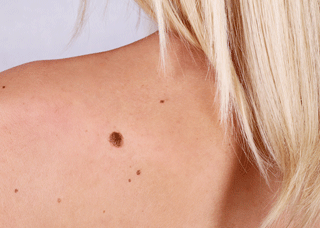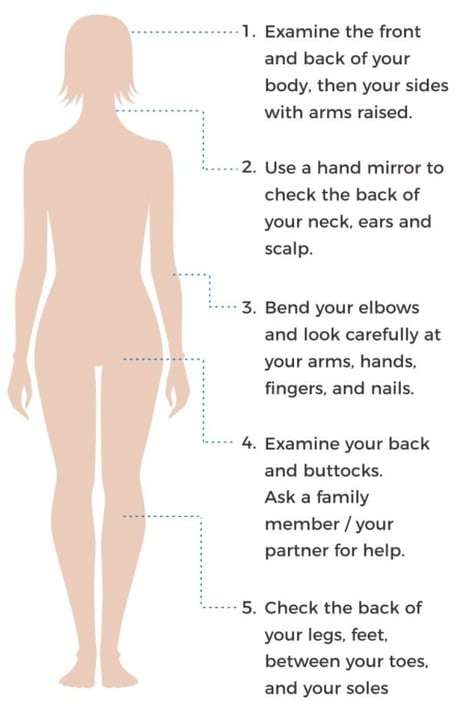How to Self-Check for Skin Cancer
 How often do you check your skin for signs of skin cancer? Do you know what to look for? Melanoma is the fourth most commonly diagnosed cancer in Australia, with nearly 14,000 new cases in 2017. It is also the most serious of all skin cancers, resulting in around 1,834 deaths this year.
How often do you check your skin for signs of skin cancer? Do you know what to look for? Melanoma is the fourth most commonly diagnosed cancer in Australia, with nearly 14,000 new cases in 2017. It is also the most serious of all skin cancers, resulting in around 1,834 deaths this year.
The earlier a cancer is detected, the better chance you have of successful treatment and cure. Skin cancer is survivable if found early, and the treatments are not as daunting as you may think. While some cancers require surgery, others can be cured with a topically applied cream.
While melanoma is the deadliest form, other types can be very serious, too. Cancers like basal and squamous cell carcinomas are more common and can lead to serious disfigurement, loss of muscle and tissue, or even death.
The best way to detect any form of skin tumour is to get an annual skin check by a doctor who has undertaken a postgraduate course in skin cancer medicine or dermoscopy. Skin checks take about 15 minutes and are completely painless. The doctor will use a special tool called a dermatoscope to look at your skin from head to toe, searching for any suspicious spots or moles.
Sixty percent of skin cancers aren’t found by the doctor, though – they’re found by the patient. Getting to know your skin is very important for recognising any new, changing or abnormal-looking moles that appear on your body. Checking your own skin every three months is the best way to stay in charge of your own skin health and notice any problems before they become life-threatening.
Download the free self-check guide here.

Use a hand-held mirror when performing a self-check. Start at the top of your head and work your way down to your toes, checking every inch of your skin and not just the areas exposed to the sun. Tumours can develop anywhere on your body – even under your fingernails. Ask a loved one to check the hard-to-see places.
Pay close attention to:
- Behind your ears
- Your scalp, neck and back
- Your eyelids, nose and cheeks
- The backs of your arms and legs
- Your genital area
- Between your toes and under your feet
Do you know what you are looking for? Unfortunately, there is no one-size-fits-all. All tumours look very different, and some do not look suspicious at all. However, some common features include:
- A new mole or spot; this is especially suspicious if you are aged over 40
- A mole that has changed in colour, shape or size
- A spot that will not heal properly, is bleeding or itchy
- A raised or lumpy spot
Some people are at higher risk than others. Click here to learn more about melanoma risk-factors.
If you are concerned about any skin changes, you should see your doctor straight away. Australia and New Zealand have the highest rates of melanoma in the world, so it is important to get professional skin checks at least once a year.
- Tags:
- Detection
